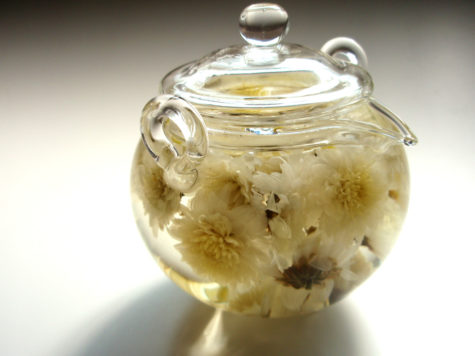How To Make An Infusion
If you think of making tea, you probably picture an infusion. It’s the simplest, most fundamental way to work with herbs, and is a preferred method in most circumstances. Infusions can be prepared in a variety of ways, but the these are the most common:
- Hot Infusion:
Like using a tea bag, a short, hot infusion means pouring boiling water on your herbs, letting them steep for a few minutes, and drinking as soon as tolerably cool. This method is best for herbs with aromatic, or volatile constituents, which will evaporate if left to infuse for too long.
- Cold Infusion:
This method is used for demulcent, or mucilaginous herbs, such as marshmallow – those that increase the water’s viscosity as they infuse, rendering it first ‘velvety,’ then slimy. This only happens in cold water, hot water doesn’t release the constituents responsible for this effect.
- Long Infusion:
Whey trying to extract mineral content from nutritive herbs such as nettle, a long infusion is required. When done in a tightly sealed jar, this method also allows us to combine the quick-release aromatic constituents of one herb with the slow-release mucilage from another, as the initially hot water cools over time.
Administration and Dosage
Infusions are generally drunk as they are. They may also serve as an ingredient an another remedy (bath, soak, compress, syrup, lotion, etc). Each infused herb or formula has its own dosage ranges, but it is normally recommended to drink a quart of infusion daily, sometimes more.
Shelf Life and Storage Guidelines
Dry herbs blended for an infusion can keep for years if they’re stored in airtight containers. Once water is added, infusions are generally only good for 1 or 2 days; if kept refrigerated, this could extend to 3 days. Trust your tongue. If the tea tastes “skunky” or otherwise off, best to make a new batch.
Necessary Tools, Equipment, or Ingredients
- Herbs
- Water
- Teacup, teapot, mason jar, French press, or other container
- Mesh strainer
Preparing The Remedies – Step by Step
Unless otherwise specified, use 2 to 3 tablespoons of herbs per quart of water. If making only a single cup of tea, use 1 to 3 teaspoons of herbs.
Combine the herbs with the water and let it steep:
- Hot infusion: Pour boiling water over the herbs, cover and steep for 20 minutes or until cool enough to drink.
- Cold infusion: Pour cold or room temperature water over the herbs and steep for 4 to 8 hours.
- Long infusion: Pour boiling water over the herbs, cover tightly, and steep for 4 to 8 hours or overnight.
Once the herbs have steeped, you may strain the liquid and compost the leftover herb material. The technical term for this material is marc.
Pros
- Easy to make: Hot water, herbs, and a container are all you need.
- Versatile: Infusions can be employed in a variety of ways, depending on need.
- Potent: Each infusion method extracts a broad spectrum of constituents from the herbs, giving a good reflection of their full potential.
- Hydrating: Drinking enough water is important for good health; infusions count as water intake.
Cons
- Taken in quantity: When you drink an infusion, you need at least a teacup or two for beneficial effects. Not all herbs taste good, and some can be unpleasant to drink in that quantity.
- Short shelf life: Once made, infusions must be consumed promptly.
Additional Considerations
A press pot is a handy way to make infusions – you can steep them inside for a long time while still keeping them hot.
For long infusions, you can also use a drop coffee maker. Put the herbs into the carafe (not the filter basket), turn it on, and let the water drip down onto them. They’ll stay warm on the hot plate, shortening the amount of time you need to infuse them. If it was ever used for coffee, though, this will add a coffee taste to your tea.
Source: Herbal Medicine for Beginners
Rennie Luttrull: queen-annes-lace-seeds
Rosanna: Spignel aka Bald Money
Annamarie Squatrito: Fumitory
EILEEN Klinghagen: Pumpkin
Mahmudul Hasan: Celery



Leave a Reply